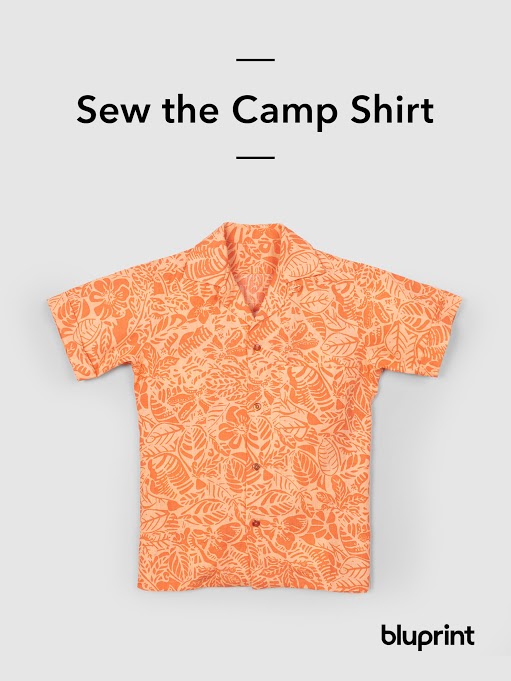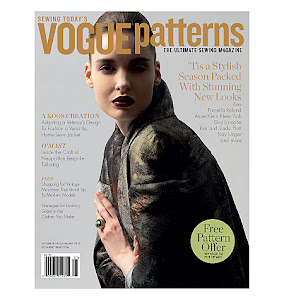Friends, I am happy to report that my Kwik Sew 2123 Men's Jeans are coming together nicely. I'll be revealing them tomorrow but in the meantime I thought I'd talk about how I'm making them.
Before I begin, however, I wanted to tell you I'm running again. No, not for President of the Troy Donahue fan club, running for exercise. Maybe you didn't know that from early October (my high school reunion to be exact) till about three days ago, I've either been sick, getting sick, or recovering and feeling plain worn out. But my health has returned at long last and with it enough energy to get out in the cold and work up a sweat. Exercise makes a big difference in how I feel; of course, here on MPB, I cleverly disguise my crabbiness as wit, but rest assured my mood has improved significantly. Now let's hope my looks come back.
But on to the jeans.
I bought my denim at my little hole-in-the-wall, forever-going-out-of-business fabric dive on 35th St. for $4 a yard. It's dark, stiff, and best of all, NO spandex. The roll was nearly 70" wide, so I bought only a yard and a half, which was more than enough. But after laundering it, I realized it was a bit off grain.
Has this ever happened to you? It's cottons mostly where I've experienced this, and I'm not sure if it has something to do with laundering and drying it (I didn't check before I washed it), or if it's the quality of the denim. Anyway, I took great pains cutting my fabric to line up the pattern to the visible threads running parallel to the selvage. I cut each layer separately. But when I was stitching my pants legs (the outside seam; the inside seams were already flat-felled), I noticed one leg was twisting inward. I ended up ripping the seam out, turning the pants inside out, and draping the front and back pants leg pieces where they wanted to go, making sure the outside seam remained straight as I pinned the leg closed. I didn't care about even seam allowances on front and back. It seems to have worked: the leg hangs much straighter and I don't feel that twisting feeling that -- let's face it -- is the worst feeling in the world when you've nearly finished a pair of pants.
If you've ever made jeans, you know that you're usually using more than one kind of thread: regular thread for stitching seams and topstitching thread, sometimes in more than one color. I can't imagine how one can do this with only one sewing machine. There are many times you need to go back and forth between thread colors and it would be extremely painstaking to change spools each time. Of course, with the number of machines I currently own I could have used ten colors of topstitching thread, but I used only two: denim blue (which I also used for the general seams that aren't visible) in my treadle and gold in my Singer 15-91. Of course, I'll do my buttonhole on my Singer Spartan, though my buttonholer would also work on the Singer 15-91 (my treadle uses attachments that screw in from the back).
For the front and back pockets I used two rows of gold thread; all the flat-felled seams are blue (initial seam -- Wish I'd made that thread length shorter!) and gold (outside topstitched seam).
I still have to add belt loops, a buttonhole, and a jeans button, but I'm nearly done.
Of course there are little things I wish I'd done better; there always are. Let's not talk about those today.
So that's the story of my Kwik Sew jeans, friends. I'm not sure I prefer this pattern to Simplicity 4048. Both patterns require significant narrowing of the leg to fit the way I like them and some lowering of the waist. I've never used a pants pattern that didn't need tweaking.
Anyway, I'm off to make belt loops.
Have a great day everybody!
WARNING: Catchy tune, highly addictive.













So glad you're feeling better!
ReplyDeleteJeans are when I mostly wish I had multiple sewing machines. Although, this time I got around it by using regular thread in a triple-stitch for my topstitching. So lazy! Well, except for all the changing of stitches.
Your jeans are looking good! Excited for the big reveal tomorrow :)
Oh, I'm never going to get that song out of my head! :)
ReplyDeleteYour jeans look great! I'm always amazed and envious at how fast you're able to complete a project.
Your jeans look great. And twill is always off grain. It is not because you bought cheap fabric, but just a characteristic of the weave.
ReplyDeleteALWAYS off grain?? So what are you supposed to do?
ReplyDeleteI've also had to deal with twill that's way off grain. Yours didn't look half as bad as mine did! I think it's the nature of the beast. They look fantastic!
ReplyDeleteI hope more people post about that whole off-grain thing. I seem to remember something taught in Home Ec, back before we had television, you know, and we had to stretch our fabric. We stretched on the bias, and tugged and pulled until it was al straight. It was so hard and so awful, it put me off sewing. Well, I did stick with sewing, but I did not like that part of sewing.
ReplyDeleteGlad you are feeling better. I can commiserate. I had dental work done that made me feel terrible for a solid 2 weeks and then it was amazing to feel energetic again. I danced my little heart out in my Zumba class. Enjoy!
I don't know what you are supposed to do, but here's what I do. I wash the fabric and cut my pattern in a single layer with all grain lines parallel to the selvedge. This seems like the best way to keep the seams on my jeans from twisting around my legs.
ReplyDeleteThe home ec method of blocking the fabric is good for other weaves that have been pulled off grain when they were rolled on to the bolt, but not so great for twill. If you block your twill to make it straight, it will twist off grain again when you wash it in the machine.
I thought you would add some fancy stitching on the butt pockets or some rhinestones?? kidding...
ReplyDeleteAmazing what you can do in just one day. I would be fussing around deciding where to put this machine and where to cut the fabric, ending up doing nothing actually!
Can't wait for the final result.
Will you be making your belt?
I've also had fabric go off-grain in a pre-wash. Now I sew the cut edges into a tube with a 1/2 inch seam (serger or straight stitch) before it goes into the washer. Then the seam is cut off when its dry. Not much fabric is lost, just an inch or so and the fabric stays on grain. Also with a raveley fabric it prevents knotted up edges.
ReplyDeleteOh, Phyllis, I'm going to try that!
ReplyDeleteWow, Peter!! Those jeans are FANTASTIC!! It's always such a treat to come here and see what you've made.
ReplyDeleteI'm glad to hear you're feeling better. :)
And a tip from the dark ages when fabrics were not as reliable as they are today: get a second person, fold fabric in half widthwise if too wide to hold flat between two outstretched hands, each person grab two corners of the fabric and pull first on one diagonal and then on the other. Keep it up until the grain looks straight. It's awkward and takes some time and a lot of pulling, but it usually works on cottons, and works better if you don't have to fold the fabric.
ReplyDeleteI usually cut and tear a piece at each end of the wovens just to check how off the fabric is.
Love the topstitching!
Heather
boy, do you do professional work for only having sewn for a couple of years! All patterns need tweaking. That is what keeps us coming back to buy more patterns. When I was in high school, I could sew something straight from the pattern, but since the eighties, patterns have been more 'suggestions' than real patterns.
ReplyDeleteYes, I hate those illness hiatuses that set you back on the exercise front. Happy to hear you are back in form. Finally getting back to my yoga classes this week! Maybe that morning crick in my neck will go away again. The jeans look great -- topstitching is amazing!!!! I've never done jeans but with so many amazing pairs popping up on the blogs it's tempting. But when I think about how I've found the perfect fit in super inexpensive online retailer jeans and now have three pairs . . . I've got to say that I know the coat and dress projects will give me more bang for my time invested. Unless and when, of course, they discontinue my fav style.
ReplyDeleteThe denim being off grain is really common. I still have some super twisting jeans.
ReplyDeleteNow I 1. Wash like Phyllis says - several times for denim 2. Work really hard at straightening the grain like Robyn and Heather describe - but whilst the fabric is wet,then hang to dry, well pegged to shape (probably not an option in NY?)
3. Cut the jeans in a single layer like couture arts describes. I nearly always cut twill fabrics in a single layer.
I line dry jeans, and tug the legs before hanging them out. I haven't experienced post wash twisting as couturearts describes, but maybe I have just been lucky.
LOL. I don't remember ever making up a pattern right out of the envelope. Your jeans look amazing. The topsitching is perfect. How do you line up the second row so beautifully without being able to move your needle position or a foot with an edge guide? (I'm very spoiled)
ReplyDeleteThanks, Nancy! I use the width of the left side of my straight stitch foot as my guide. It just takes practice.
ReplyDeleteTwill is a diagonal weave. Don't fight it by stretching or trying to re-contort it.
ReplyDeleteI'm not one to give advice on laying out patterns, because I always eyeball it. I make a fold that is even (no wrinkling along the fold line) and use that or the selvage to line up against. But I still don't usually measure or anything.
Your jeans look great! And glad to hear you're back to your old self. But you never did lose your looks. ;-)
I agree, Debbie! All throughout Peter's poor-health phase, he would look in the mirror and bemoan his wan, lackluster looks. However, I kept seeing a fine-looking man rocking outfits from wedding suits to Indian tunics to (a lot of) jammie-like lounging ensembles. (I threw in that term "rocking" to get Peter's goat — he hates that usage!)
ReplyDeleteWhen we're sick, I think one of the aspects of ourselves that suffers most is our self-image. We tend to imagine that we look as awful as we feel. In Peter's case, at least, he needn't have worried.
Can't wait to see him *rocking* the new jeans tomorrow!
Great jeans Peter, you just need some cool rivets to finish them off!
ReplyDeleteLove your topstitching, lovely & straight.
I too, set up my old machine with topstitching thread when I'm making jeans. saves soooo much time!
Would be worthwhile ANYONE who wants to make themselves somejeans to buy a second hand machine just for this purpose. (most mechanical machines have an excellent straight stitch ideal for top-stitching)
You know Peter you don't have to limit yourselve to mens patterns for jeans.
Give the Jalie #2908 jeans pattern a go (could easily be made slim leg if you don't like the bootcut) - one afternoon making a muslin will soon tell you if these fit you well. (the low rise is perfect for guys)
my guy is slim like you & he steals my jeans all the time.
they don't look womanly on him at all & hug his butt VERY nicely indeed! (a requirement in mens jeans IMO!)
anyway, excellent job as always Peter, keep it up!
Like a lot of other people said, jeans being off grain (or, usually, twisting that way washed) is really common. My teacher used to advice me not to pre-wash it. I know that's sort of sacriledge is sewing land but it allows you to cut your pattern pieces without having to struggle with the grain. Once the garment has been sewn up, the grain seems 'set' by that and doesn't twist. Of course, the problem with this is that most denim and twill will shrink when washed.
ReplyDeleteBy the way, I have only one sewing machine and changing thread again and again is what puts me off sewing jeans for a while after every pair I make. And I particularly resent making and attaching belt loops. In fact, I design my styles and draft my patterns to avoid them.
An impressive looking pair of jeans and I loved the additional entertainment. Thanks for everyones comments and insights on the twill grainline issue. Really looking forward to the big reveal as well.
ReplyDeleteOh it works believe me! I can't take credit for this tip, I think I read it in Threads years ago. Works for knits too and it prevents them from getting wound around the agitator. One thing I forgot to mention: for fabrics like denim (especially a dark wash) sew the tube rights sides together because the dryer can sometimes leave a fade mark along the edge opposite the seam.
ReplyDeleteLittle wonder everything fits....Peter is so thin. If we were all so lucky...
ReplyDelete